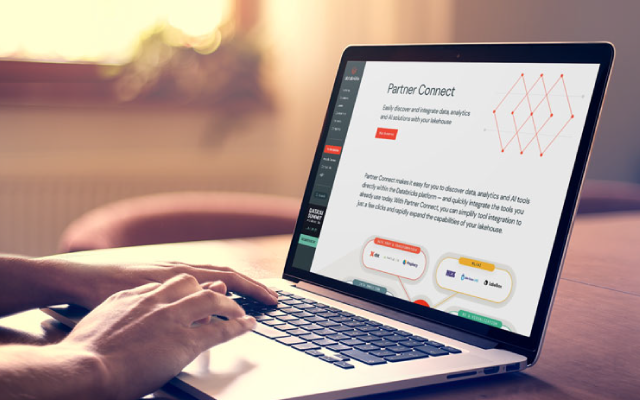8 Top Data Governance Trends That Are Shaping the Future
Published on 2024年8月16日

As a business, you’ll certainly be aware of the huge growth in the importance of data over the last few years. With computing power increasing and the amount of data available for businesses to use expanding every second, data is becoming an indispensable part of our lives.
However, with that rapid growth comes increased responsibilities regarding securing and managing your data. This all comes under the umbrella of data governance, a strategy that helps ensure your data is up-to-date, accurate, and stored securely.
This means that data governance is becoming an increasingly hot topic – the market is set to grow from $3 billion to $15 billion by 2030. To stay on top of this growth, you’ll need to know how data governance is changing and adapting to an increasingly complex compliance landscape.
That’s why we’ve put together our top eight data governance trends shaping the future of data management. Implementing these trends in your business will mean you can ensure that your data strategy is as up-to-date as possible. Keep reading to find out more!
What Is Data Governance?
When you’re architecting a solution in your digital infrastructure, you’ll likely encounter problems around data governance. Essentially, data governance involves defining how data should be collected and used within an organization. The core questions it addresses include:
What does “data” mean to the business?
Where is data sourced from and stored?
How accurate should the data be to be used?
Who within the organization can use the data – and how?
Because it’s such an all-encompassing term, many organizations have divided the responsibilities of data governance into different roles. There will be someone overseeing the overall data governance strategy – someone essentially in charge of quality management – as well as a team of IT experts who implement the policies created in the data governance strategy.
Image sourced from imperva.com
Data governance is important for a range of different reasons. First of all, can you imagine trying to complete your business’s daily operations without easy and straightforward access to data? A data governance strategy can help you streamline your use of data.
It also acts as quality assurance when it comes to the content of the data itself. Inconsistencies across different systems or simple errors can pose a significant roadblock for any organization trying to use data effectively. Data governance creates procedures for dealing with these roadblocks. It also standardizes best practices for analyzing data, and building trust across teams.
Finally, data governance is becoming more critical from a legal and regulatory standpoint. Companies must comply with privacy regulations such as GDPR and CCPA to keep customer data safe and protect the business in case of incidents. By creating policies and procedures, data governance can help you be more confident that you’re complying with these laws.
An example of a data security incident is a privacy breach, such as the one experienced by Giant Tiger. In March 2024, the Canadian retailer was affected by a data privacy breach caused by cyber attackers compromising one of its vendors' systems and data.
8 Top Data Governance Trends for 2025
Now that you know more about the basics of data governance, how can you ensure that your data governance strategies are up to date? Here are the hottest trends in data governance that you can implement in your organization.
#1: Automation in Data Governance
Automation is growing more common in business software as the need to scale repetitive tasks across vast data landscapes grows more pronounced.
It’s also being seen in the world of data governance. Emerging software capabilities are making automating many critical data governance and stewardship tasks easier, such as asset classification and curation. If done correctly, automation can increase productivity and reduce the number of errors that make their way into your data.
#2: Real-Time Processing
Image sourced from splunk.com
Data management has traditionally consisted of three stages: collection, processing, and analysis. However, more organizations are starting to combine data collection and processing – rather than processing vast quantities of data in batches, the data is processed into the required formats as soon as it is collected.
This is called real-time processing, and it can make it much quicker for you to produce the right insights from your data. You won’t have to wait days for the processing to take place.
Before implementing this capability, you must ensure that real-time processing is the correct route for your organization. This type of processing is very resource-intensive, and you’ll need very secure data privacy procedures. However, real-time processing can be a great solution real-time processing can be a great solution if you need quick and efficient insights from your data.
#3: Artificial Intelligence and Machine Learning
The release of ChatGPT has opened up a Pandora’s box of possibilities for business innovation. Organizations are starting to use AI in their digital architecture (for example, see how the US uses AI for its Federal Enterprise Architecture (FEA)) as well as many private organizations.
One of the most common uses of AI in data governance is to improve your datasets' accuracy. This is because AI can quickly and accurately scan vast amounts of data to search for inaccuracies and anomalies. AI can also be used to detect data breaches. It can locate suspicious behavior and notify leaders of a suspected breach.
Threat detection is an excellent example of how AI can be harnessed to promote better security. By developing sophisticated detection systems that are based on machine learning technology, organizations can analyze specific network patterns and spot any suspicious activity that might point to an imminent data breach.
#4: Cloud-Based Solutions
Storing your data on the cloud rather than on-premise, is a great way to increase the scalability of your data governance. It will also help you to adapt to the current, remote-friendly working environment, making data accessible from anywhere.
However, when you begin your journey towards cloud transformation, you’ll need to put in time and effort to maintain data security and privacy. To avoid risk, you’ll want to implement your data governance policies and controls immediately.
#5: Decentralization and Democratization
Traditionally, data has been the domain of an organization's select group of specialists. Now, however, more and more people within organizations seek to make better decisions with access to data. This is happening thanks to the decentralization and democratization of data.
Data democratization is all about empowering everyone in your organization to use data independently, with the appropriate safeguards and controls. Using a data intelligence platform, removes the technical jargon that often surrounds data – meaning everyone can easily work with data-driven insights.
#6: Data Ethics and Privacy Regulations
For customer-facing companies, data ethics are becoming an increasingly hot topic. This is also important because data privacy regulations such as GDPR and CCPA are still in place – and there’s no sign that regulations will get less strict any time soon.
Customers need to believe that they can trust your organization to use their data ethically and fairly. Some ethical considerations to make around data usage include:
Make sure you have obtained informed consent for data collection
Keep your data usage practices as transparent as possible
Only use the data collected for its intended purpose
Always keep data protected from unauthorized access and/or use
#7: Monitoring and Lineage
The best uses of data come from companies that monitor data flow through the organization – also known as data lineage. This is because you can have a clear image of how data has changed as it makes its way from its origin to the final insights that are used in the company.
Data monitoring and data lineage are crucial for troubleshooting and problem-solving, as you can use this “family tree” of data to identify the source of any inconsistencies in the data production system. If you seek to enforce high levels of data quality, then monitoring and lineage need to be key parts of your data governance strategy.
Moreover, emerging trends like data observability are gaining traction. This focuses on the ability to track, understand, and optimize data quality and performance in real time. Integrating these practices into your data governance framework ensures that you not only monitor the data but also gain deeper insights into its behavior, leading to more informed decision-making processes.
#8: Data Validation
Another crucial aspect of ensuring data quality is using specific processes to make sure that your data is accurate and reliable. Without ensuring the quality of data, you can’t rely on any of the insights that you produce from your datasets – making the whole process almost useless!
One of the best ways to increase data quality is by using validation rules. Let’s say that you use email lookup to collect email addresses. This data will need to be validated before you can use those addresses, for instance, by double-checking the email addresses against another data source.
This can also be used to standardize your data. When you collect data from a range of different sources and methods it can often come in different formats. This makes it harder to directly compare different datasets. However, data validation processes can be used to reformat data so that you have a consistent approach across your organization.
Data Governance Trends: The Future of Data
If you want to make sure that your organization remains at the leading edge of data and technology, you’ll want to have an approach to data governance that is up-to-date – especially given how fast-changing the world of data governance is!
That’s why we put together our top eight data governance trends for the future of collecting, processing, and analyzing data – including using AI and data democratization. Start implementing these trends in your data governance policies today!
Curious to learn how Alation can help you scale data governance? Book a demo.
- What Is Data Governance?
- 8 Top Data Governance Trends for 2025
- Data Governance Trends: The Future of Data








